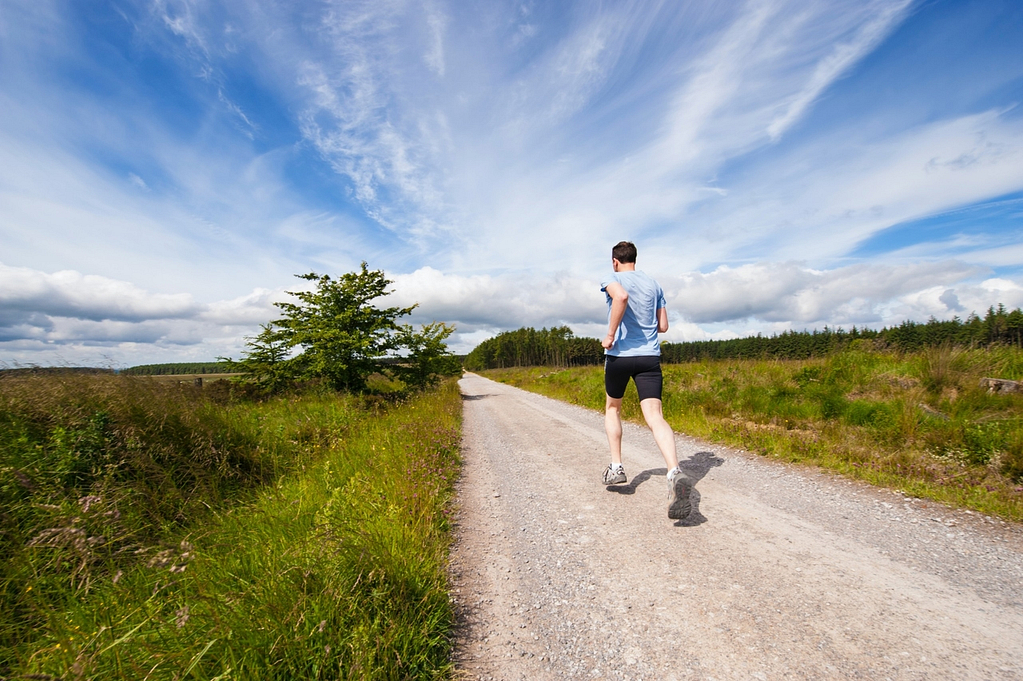Whether you prefer the faster pace and endorphins of running or the joint relief and social benefits you get from walking, both walking and running are excellent exercises that can help you live a longer and healthier lifestyle. Neither form of cardiovascular exercise is necessarily superior to the other, but both have benefits and may serve you at different stages of your life. We’ll look at the differences of walking (see also ‘Your Guide to the Best Treadmills for Running‘) vs. running (see also ‘Best Hot Weather Running Gear‘), including:
-
- Walking and Running Benefits
- Running vs. Walking for Weight Loss
- Running vs. Walking for Speed and Endurance
- Running vs. Walking for Joint Health
- Running vs. Walking for Seniors
- Walking Shoes
- Walking Shoes for “Big Guys”
- Walking Boots for Achilles Tendon Injuries
- Walking Stick
- Best Running Shoes
- Trail Running Shoes Vs. Treadmill Running Shoes
- Running Shoes for Heavy Runners
- Best Pants for Running
- FAQs
Walking and Running Benefits
Walking can provide a lot of the same benefits as running without the stress or wear and tear on your body. Research suggests that both running and walking and other cardiovascular exercises offer many health benefits including:
- Lowers the risk of heart disease.
- Reduces blood pressure.
- Increases HDL or “good” cholesterol.
- Helps control blood sugar.
- Improves weight loss and weight management.
- Improves cardiovascular conditioning and heart health (become an ultra runner).
- Improves lung functioning.
- Lowers heart rate.
- Boosts immune system.
- May extend your life.
Research comparing running to walking have found that whether you run or walk, you generally see the same benefits of cardiovascular health, diabetes, blood pressure, and heart disease when you do the equivalent amount of exercise over a period of time.
Running vs. Walking for Weight Loss
If you’re looking to lose weight, however, running might be a better choice than walking (See track workouts for distance running). While walking is an effective weight-loss tool, running can burn up to twice as many calories and will help you shed pounds faster.
- Not all types of running burn the same amount of calories, though. A study from the The Journal of Applied Physiology suggests that running in short bursts may burn more calories than longer endurance running. In fact, this study implies that as little as six minutes of intense exercise could be as effective as an hour daily of moderate exercise (isokinetic exercises).
Running vs. Walking for Speed and Endurance
If you’re looking to improve your speed and endurance, running is a better option. Since running is a more intense form of exercise, it will help you build up your speed and endurance faster than walking. However, walking is also great for building up endurance (see also ‘Can Endurance Training Build Muscle?‘).
Running vs. Walking for Joint Health
If you are concerned about joint health, walking is probably the better choice for you. Running is high impact and can put more strain on your joints, whereas walking is gentler on the body, so it is a better choice for people with joint problems.
If you would like to run (see also ‘Training, Workouts, and Tips For Distance Runners‘) but are concerned about your joints, you can try running on a soft surface, such as a grassy field or a beach. And keep in mind that the best running (see also ‘The Best Budget Friendly Running Accessories‘) sneakers for bad knees will have extra cushioning to protect your joints.
h2 id=”seniors”>Running vs. Walking (see also our guide to treadmill maintenance) for SeniorsMature adults may benefit more from walking than running (Best running watches 2022). Running can put more strain on your joints and muscles, which often become weaker as you age. Also, one study showed there are significantly fewer musculoskeletal injuries associated with walking than running. Due to the low-impact nature of walking, it’s generally safer for seniors who are at risk of joint (see also ‘Using Gait And Glider Exercises To Improve Knee Joints‘) or muscle injuries.
Walking Shoes
Walking shoes are designed to be more comfortable and supportive than running shoes. They have thicker soles to cushion the feet, and they often have extra support around the ankles.
“Walking Shoes for “Big Guys”
If you are a “big guy”, then you need to be careful when choosing walking shoes. Traditional walking shoes (see also ‘Product Review: The Best Asics Shoes for Walking and Running‘) are designed in ways that can lead to them breaking down quickly if worn by heavy people, and it can also lead to foot and ankle problems. For these reasons, the best walking shoes (see also ‘The Best Shoe Recommendations for Runners‘) for big guys will be ones that are designed for people who are large or have wide feet.
Best Walking Boots for Achilles Tendon Injuries
If you are recovering from an Achilles tendon injury, then you should wear walking boots that are designed to support the Achilles tendon and reduce stress on the tendon. This added support can help to prevent further injury and also help to reduce pain (see also ‘Exercises To Relieve Nerve Pain‘).
Walking Stick
A walking stick can help you stay balanced on uneven terrain and can also help to take some of the stress off of your joints. If you’re going to be walking on rough terrain, then a walking stick is a good piece of gear to have. The best wood for a walking stick is hickory, but any strong wood will do.
Best Running Shoes
Running (see also ‘Unique Gifts for Runners Who Have Everything‘) shoes are designed to be lightweight and provide good support. They have thin soles to help you run faster, and they often have extra cushioning in the heel to absorb impact. The best running shoes for women are ones that are designed for women’s feet, are lightweight, and provide good support.
Trail Running Shoes Vs. Treadmill Running Shoes
Trail running shoes are designed to provide good traction on uneven surfaces that you’ll find on hiking trails. They also have extra cushioning to protect your feet (see also ‘10 Exercises for Sore Feet‘) from protruding rocks and roots.
- Treadmill running shoes are designed for the smoother, more even surface of a treadmill. They don’t need as much cushioning as trail running (see also ‘Best Winter Running Gear‘) shoes because there are no obstacles to worry about. The best treadmill running shoes for women are ones that are lightweight and support your feet.
Running Shoes for Heavy Runners
If you are a heavy runner (see also ‘The Best Running Programs to Help You Get Started’), you need to buy running shoes that are designed to add extra support and cushioning. This is because the extra force of heavy running can put more strain on your feet, ankles, and knees.
Best Pants for Running
Running (see also ‘The Best Men’s Running Gear On The Market’) pants are designed to be lightweight and comfortable. They often have a drawstring waist and zippered pockets. The best pants for running (best compact treadmills for runners) are ones that are made of breathable fabric and fit well.
FAQs
Are Running and Walking Shoes Different?
Yes, running and walking shoes are different (Tips for distant runners). Walking shoes are designed to be more comfortable and supportive than running shoes (see also ‘Best Compression Pants And Gear For Running’). They have thicker soles to cushion the feet, and they often have extra support around the ankles (see also our favorite Achilles stretches).
What’s an Ultra Runner?
An ultrarunner is someone who runs (see also our guide to the best running trails) long distances. Ultra runners typically run races that are longer than the traditional 26.2-mile marathon distance (runners therapy). Ultrarunners need to be in good shape and have a lot of endurance (see also ‘Gaining Running Endurance As A Vegan‘). They also need to train specifically for ultra running races.
Can I Walk with Running Shoes?
Yes, you can walk in running shoes (Peleton Vs Running). However, walking shoes are designed to be more comfortable and supportive than running shoes. They have thicker soles to cushion the feet, and they often have extra support around the ankles.
How Many Miles is 5KM?
5 km is equivalent to 3.1 miles.
- Why is My Poop Black: Uncovering the Causes and Solutions - December 21, 2023
- Clear Protein Drinks: Optimal Hydration and Muscle Support for Athletes and Fitness Enthusiasts - December 21, 2023
- Does Apple Juice Make You Poop: Uncovering the Digestive Effects - November 29, 2023








